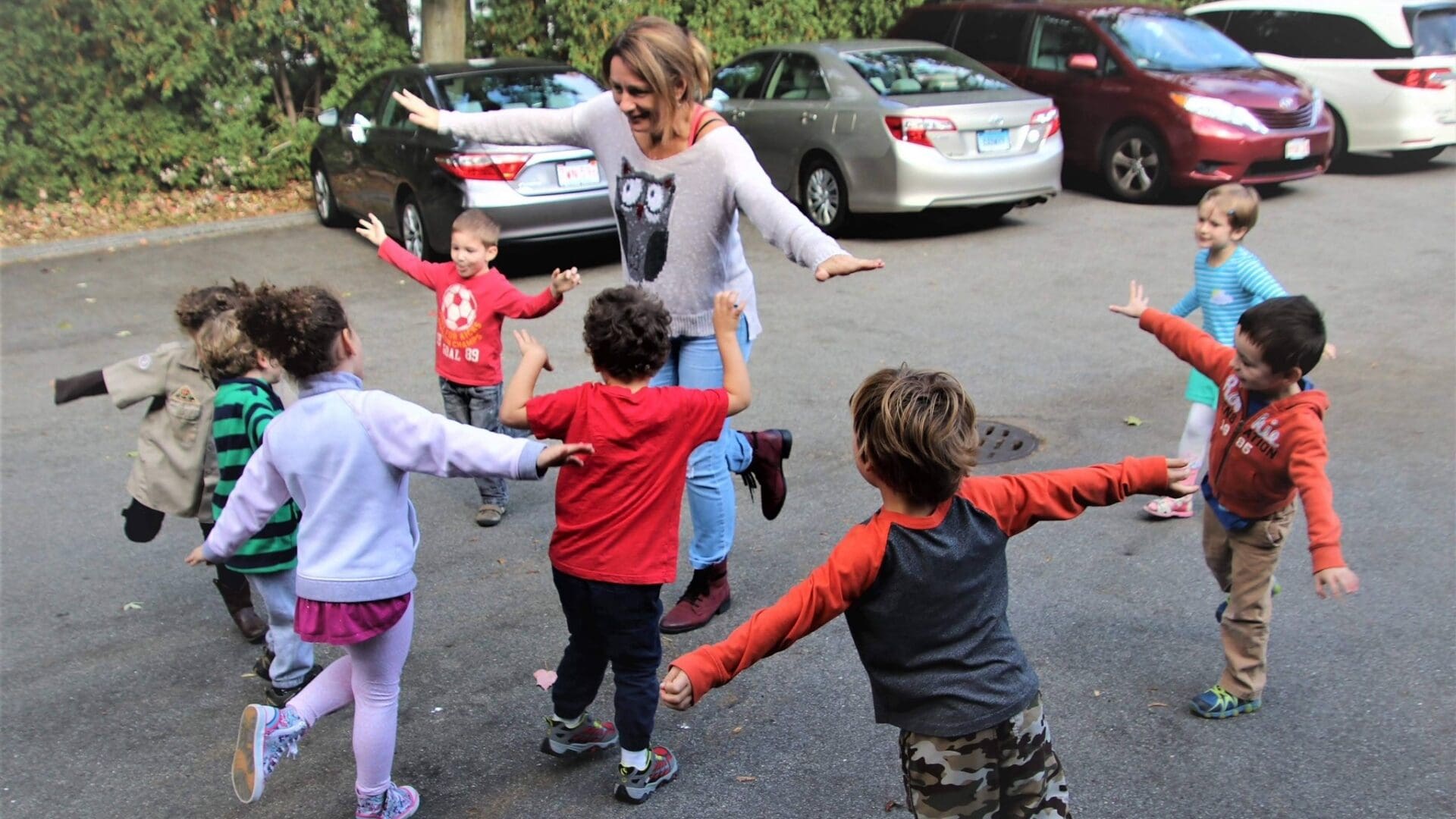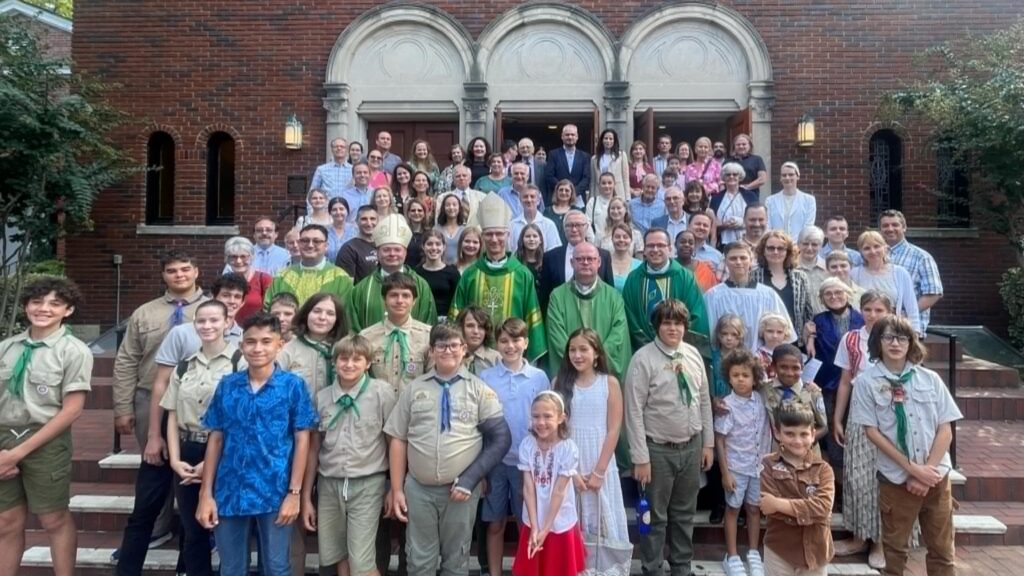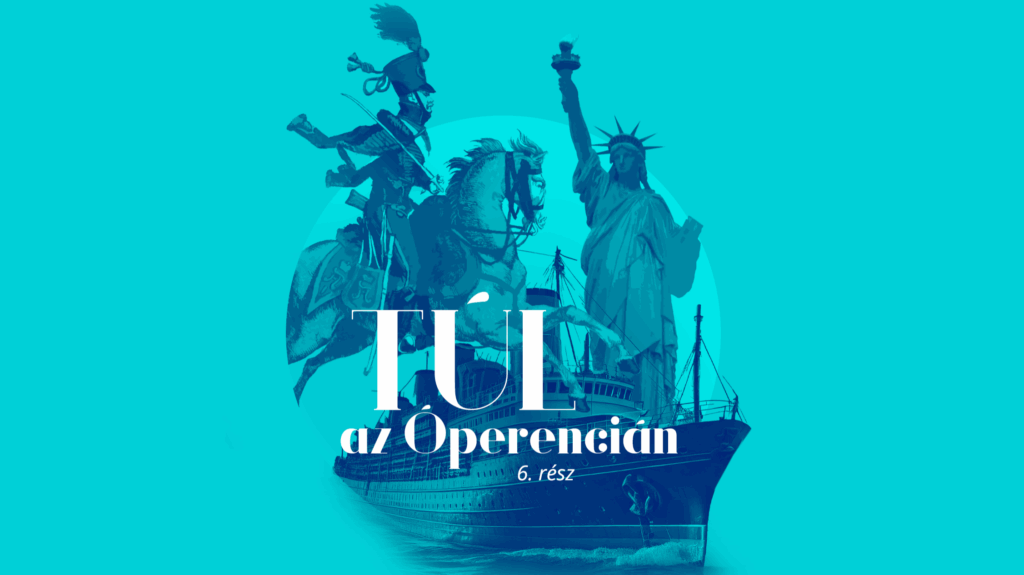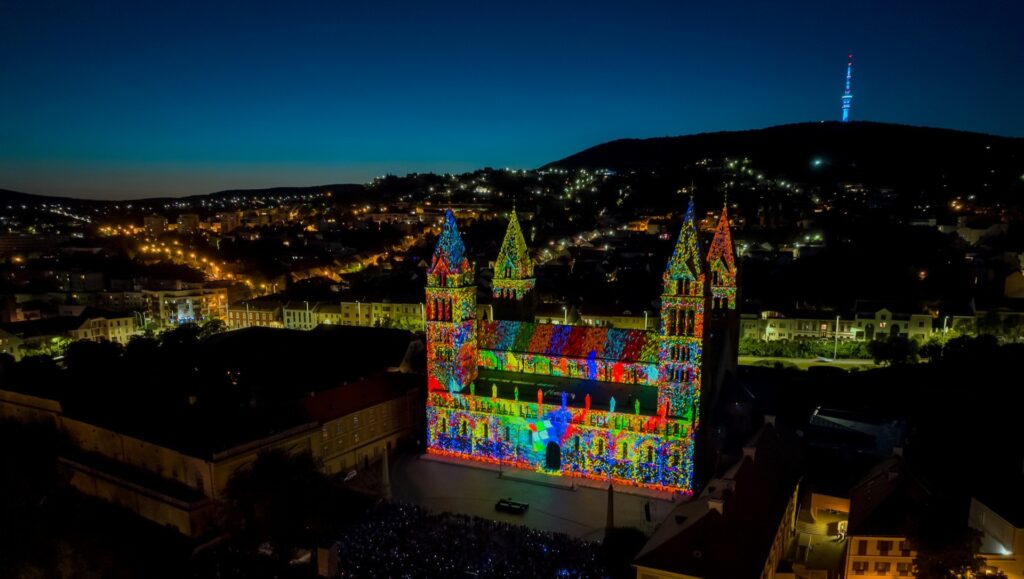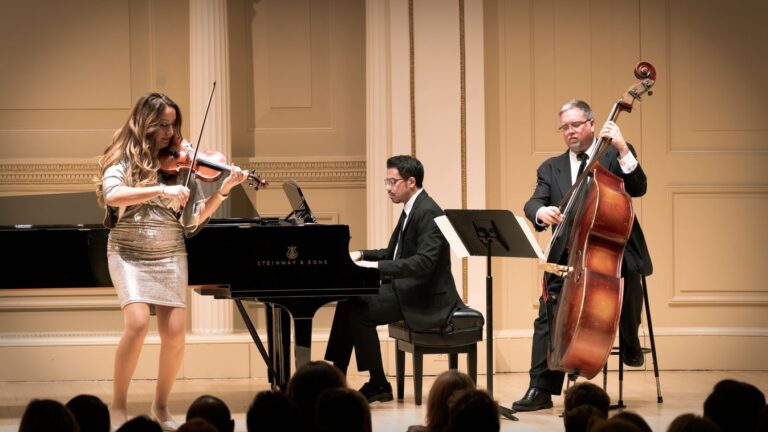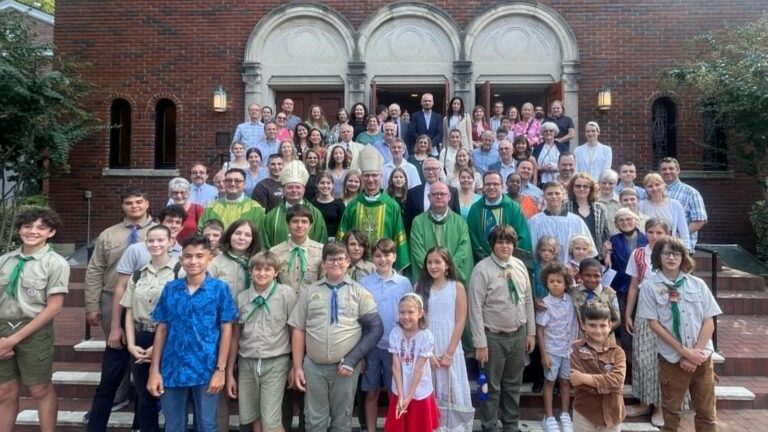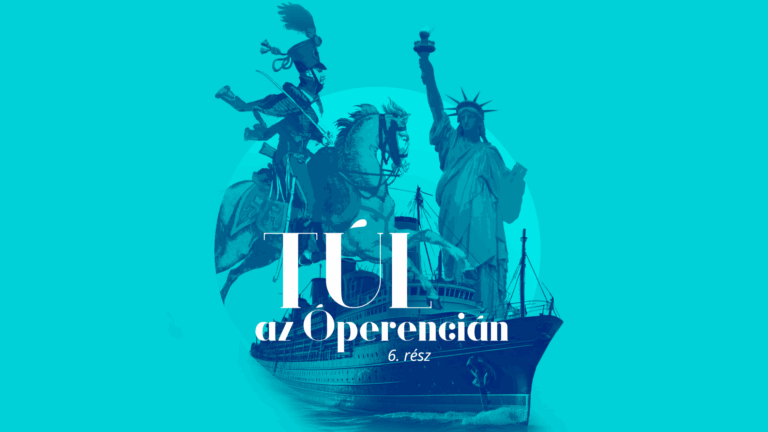I met Emese Varga at the annual gala dinner of the Hungarian American Coalition (HAC), where Boskola was honored. What makes Boskola special is that it draws students from several New England states, and the local Hungarian scout troop organically grew out of its student base. While leading Boskola for 22 years, Emese Varga was also a board member of the Hungarian Society of Massachusetts, and later of the HAC. She retired from her headmaster role in 2022 but continues working for children in the Hungarian American diaspora.
***
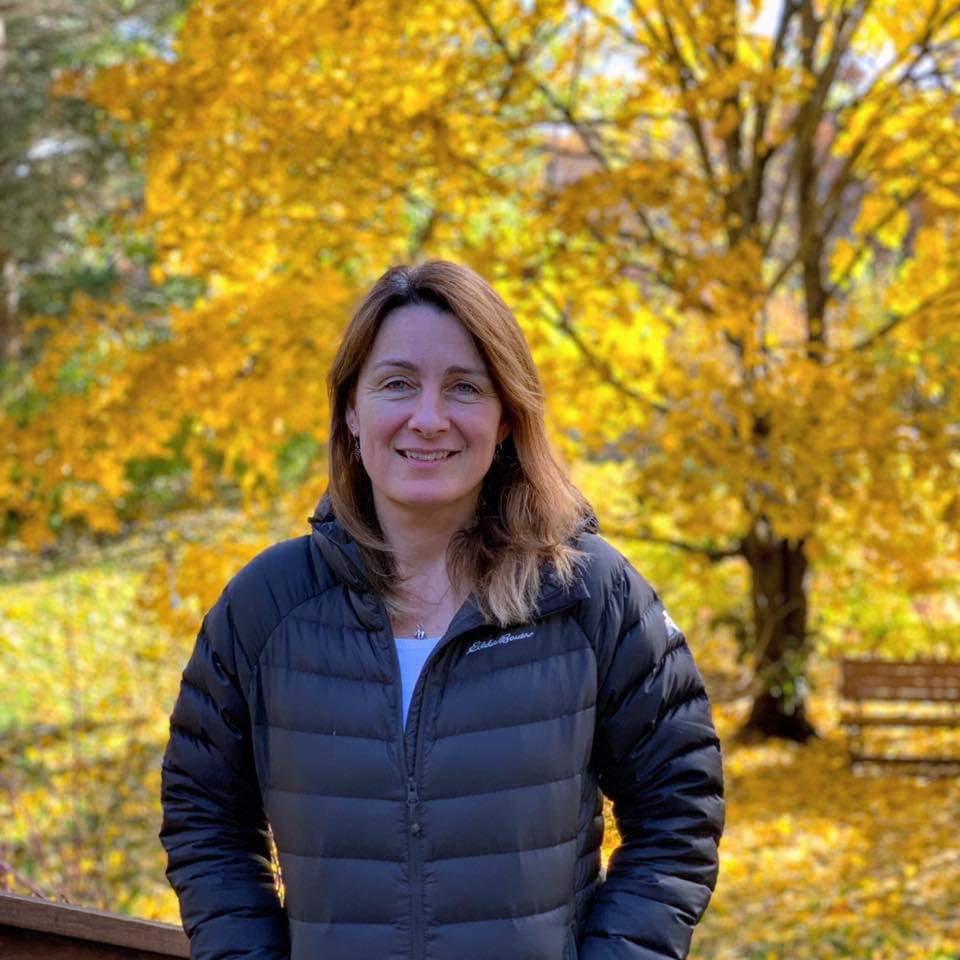
How did you become a guitar teacher?
Fate brought me to two legendary teachers, Márta Winkler and Klára Kokas. We were the second experimental class at the Váli Street elementary school in Budapest. With her quite innovative teaching method, Márta has effectively laid the foundations for experiential education, where we learned to voice our own opinions. A film director followed the life of the class, so I’m one of the students in the documentary movie Iskolapélda (Classic Example). I participated until eighth grade at my other beloved teacher’s, Klára’s classes and organized workshops for her in Boston later, which was a great honor for me. Almost everyone in my family has been a teacher, so it is in my veins, as my godmother used to say, but I never thought I would be a school founder… I think I’ve been active in our community because I have had such great role models. The classical guitar was not a popular instrument in the 1960s. Márta invited a graduate student from the Academy of Music to present the instrument. I was so fascinated that I begged my mother to enroll me in guitar lessons. I was only seven at the time, but music has been a part of my life ever since. As a child, I was a member of the Budapest Guitar Orchestra, with whom we performed regularly in Budapest and Germany. Later I started teaching at a music school, then I was asked to run a music course in a primary school. In these places I discovered the joy of teaching and became very fond of the children, who made good progress. However, after my wedding in 1991, I had to say goodbye to my students and family. My life took a completely new turn when I arrived to the U.S…
What happened? What were your first experiences in the U.S.?
My husband’s generation was the first who could pursue a PhD program in the U.S. When Tamás Badics was accepted to Rutgers University in 1990, he asked me to marry and follow him. I loved teaching at a music school at the time so wasn’t happy about leaving. Besides, I was learning German and Russian at school, so I didn’t know any English or anything about Hungarians living in the U.S. When I first came to New Brunswick, NJ, I was surprised about the large Hungarian community and a Hungarian-majority neighborhood in the middle of the city. They warmly welcomed us since there were very few young people from Hungary moving there at that time. I first helped in the daily kindergarten of the Hungarian weekend school, taught there and even ran it for a short time. We sang in the church choir and performed at community events. When needed, we baked or helped the elderly. We became friends with the Hungarian professors teaching at Rutgers and several local Hungarian families, whose children I taught to play the guitar or flute; we organized house concerts. These families replaced the relatives we had left behind in Hungary, for which we are very grateful. They created a family environment for us, with shared family holidays and Sunday lunches, and supported us in everything we did. Without them it would have been even more difficult, as we could not travel home regularly as students at that time. In the kindergarten, I was delighted to watch the bilingual children develop. I decided to work more seriously on the education and musical development of younger children, so I continued my studies in this direction, which later helped me a lot when founding Boskola.
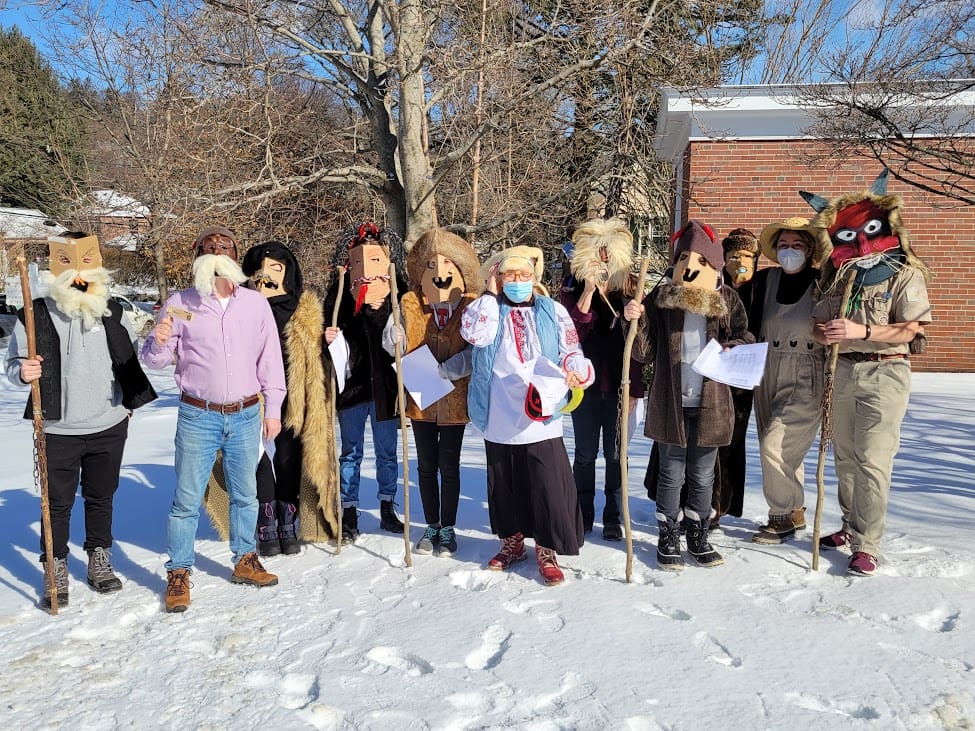
Why did you move to Boston and how was Boskola founded?
When Tamás finished his PhD in mathematics, he started to work for a company in Boston in 1995. We have stayed since and have three daughters. Arriving in Boston with a newborn, I missed my friends and the Hungarian events from New Brunswick. When exploring the neighborhood, I met a Hungarian mother at a playground, who mentioned the forthcoming Santa Claus celebration and asked if I would play the guitar for the children. There were about a hundred of us at that event. This is how I started to discover the community of Hungarians in the Boston area and learned about the local Hungarian society founded in 1964. Soon we heard about the Kuckó led by Miklós and Ildikó Fogarasi, where Hungarian families with young children met monthly, usually at one of their homes, sang together and made handcrafts. When the Fogarasi family moved to Connecticut, they asked us to take over. At one point there were so many of us with such a wide age range that I didn’t know how to prepare and manage the day, so I suggested starting up a kindergarten and a school. In 2000, a couple of families founded Boskola in our living room, with 15 children. I was in charge of the program and teaching, and Mariann Polgár took over the duties of school secretary shortly after we started. The two of us complemented each other well and ran the Boskola for many years. Originally, we had two classes: I was dealing with the kindergarteners, Erzsébet Bognár was teaching the students.
How many students do you have now and what curriculum do you use?
At our peak, 8–10 years ago, we were close to 150 enrolled students. The numbers remained steady at over 100 lately, but the huge distance is a constant challenge. In any case, it is an extraordinary fact that beyond Massachusetts-based students, we draw many from surrounding New England states including Connecticut, Rhode Island, New Hampshire and Maine, too. At first, we were able to use two classrooms at a Montessori school, but we quickly outgrew them. After several moves, now we are renting rooms in a church in Belmont, MA. At first, we didn’t have a strict curriculum. We got help from New Brunswick and Hungary; my sister and friends were enthusiastic about sending us good materials. When the number of students exceeded 100, we had to rethink our teaching direction. A new curriculum was then developed by teachers, which is still in place today. I transformed the kindergarten curriculum into a heritage program. As more and more classes had to start, new volunteer teachers arrived. A nursery group was formed from several siblings. Another group was formed mainly for non-Hungarian spouses, but there is a Unitarian pastor who also joined to learn Hungarian as a foreign language. In 2003 a local Hungarian scout troop was established. Our programs are held consecutively and in strong coordination with each other, every fortnight on Saturdays. We also have a library with nearly 2000 Hungarian books.
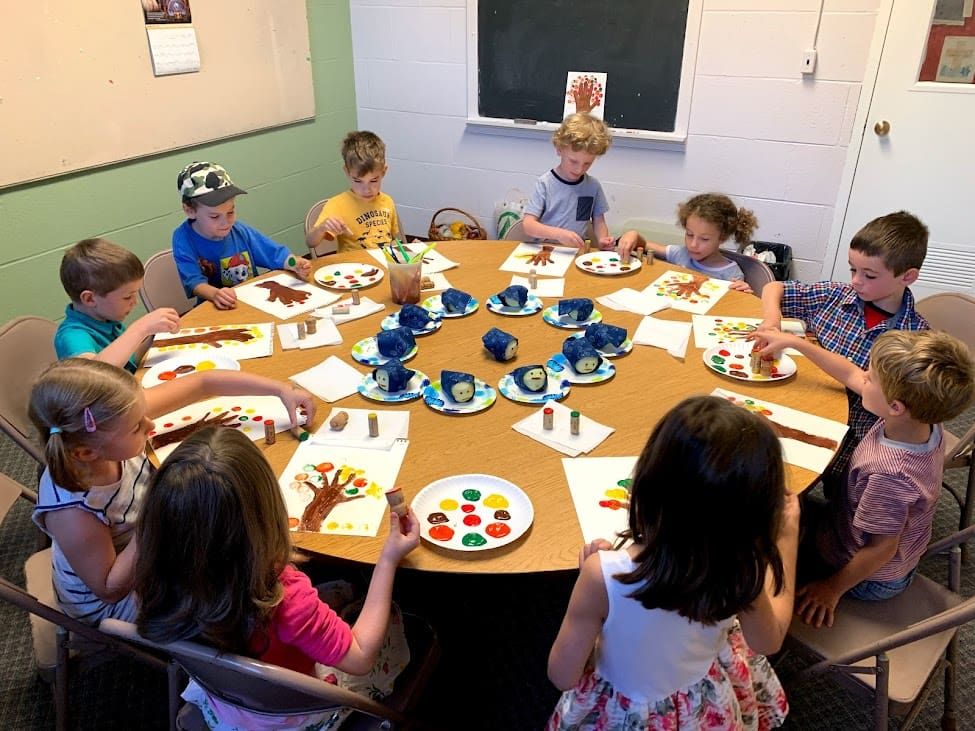
What other challenges have you faced during the 20+ years?
From the initial group of friends in the 1990s, the children came from a very strong Hungarian language background. In the Boston area, most Hungarians work in some kind of scientific research field, at universities, and their children form the core of the student base. They typically come for a few years but often extend their stay. Some of the families who have won green cards on the lottery also joined us, but relatively few. Families who come on the basis of short term assignments always pose a challenge, because going to a Hungarian weekend school can be a bit strange for their children. In recent years, more and more children have joined us from mixed-language families. Fortunately, our students are receptive and we have a good program that all children enjoy. The biggest challenge of the last couple of years is to keep the teenagers in the school, partly because of their various sports activities over the weekends. There is hope, however, as we still have at least 50 children in the kindergarten. Another constant challenge is the shortage of volunteer teachers. Because everyone in Boskola is a volunteer; no one is paid for anything. It’s harder to find teachers for kindergarten, somewhat easier for school. Fortunately, there are always new volunteers. We always keep our eyes open when new parents come along; we quickly spot potential teachers and approach them.
Why did you decide to stop leading the school in 2022?
Boskola is my home and my fourth child, but I have so many other plans: reaching out to more children in the North American Hungarian diaspora with bigger projects. I handed over the leadership to Tünde Bói, who had been teaching in the school for many years. She is currently assisted by two other colleagues, Viktor Huszár and Lilla Zöllei. I am delighted that the enthusiastic young team is taking the school forward. I am still in regular contact with the teachers and many parents; I have organized a Christmas concert and last taught folk dancing. I also continue to organize cultural activities for adult members of our community. Many people have asked me why I don’t devote my time to myself and my family instead of volunteering. The answer is simple: I care about Hungarian families and the community. My mission is to preserve, nurture and pass on our Hungarian identity, our rich language and culture to the next generation. Fortunately, many of us feel the same way and many of us are working for the same goals.
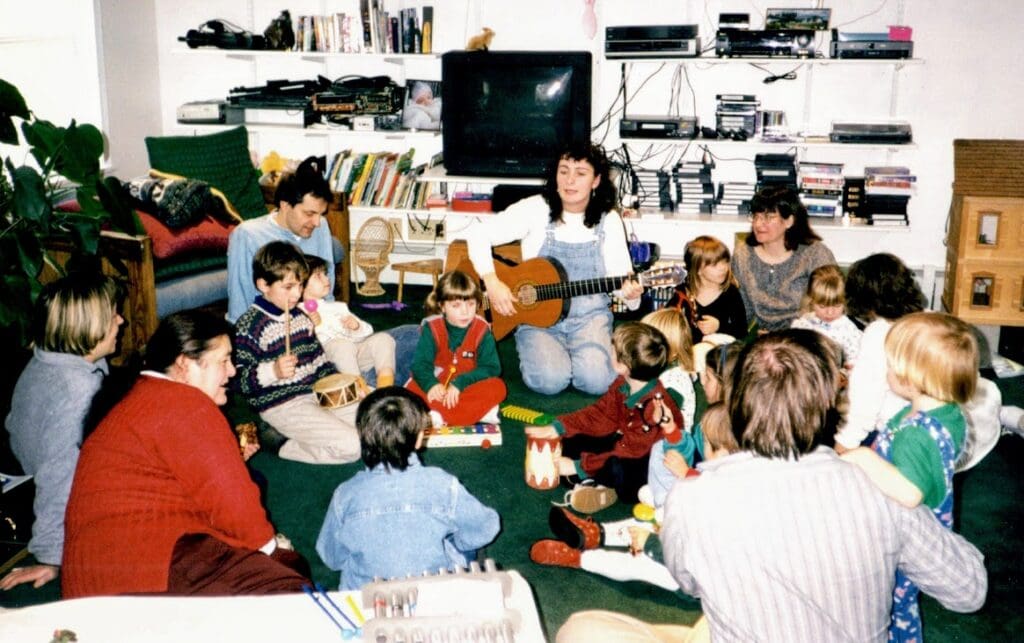
What bigger projects did you refer to earlier?
I usually sit down with a lot of people to plan together how we can provide better programs and experiences for the children in the Hungarian diaspora. In 2019, I asked Mária Bajzáth in Budapest, a folktale specialist about a potential folktale camp. She supported the idea, so we organized it. I was responsible for the music and physical activities; she was responsible for the tales. It was a big challenge for her, too, because she had only worked with children from Hungary before, but the camp went so well that participating children didn’t want to go home when it ended. It was an everlasting experience where I realized how much we could give to the children. Since then we have been working on projects that are not only for children, but also for families. To make young parents feel the importance of preserving the Hungarian language and culture, we need to set a good example. We are planning an experience that can serve as a reinforcement for both children and parents, which we would like to take to other Hungarian communities. This is a pilot program, because children are a bit different everywhere, depending on their family background and the strength of the local community. At the same time, music and free movement is universal. I often meet children who have poor vocabulary, and parents still send them to Hungarian programs for the experience. My games combined with music can make a huge difference to those who are anxious because of language barriers.
When and why did you start organizing the Hungarian Heritage Day?
In 2011, we had a teachers’ meeting where I asked my colleagues what our ultimate goal is. The official school system follows the curriculum, but we need to provide much more than that. For example: have these kids ever seen crafts? Easter was coming up at a point, so I had the idea of decorating eggs together. The event went so well that we decided to dedicate a whole day to that next year. I visited a nearby farm, told them about our plans and ended up getting a big bag of corn, from the husk of which we made dolls. A father from Transylvania knew how to weave straw; we also dyed eggs and prepared rag dolls. We even had a folk dance event (‘táncház’). The following year we had live music and a real instrument demonstration. I started to look around for teachers of old folk crafts in Hungary; that’s how I found a special school, the Nádudvar Vocational High School of Folk Crafts. The first teacher who arrived from them was very surprised at how much we volunteer. They have been coming ever since and keep helping me with ideas. We skipped one year during the Covid-pandemic, but in 2021 I organized it online. This year was the twelfth event. There were many interesting craft activities, folk music, dance performances, and ‘táncház’. The raffle and the delicious Hungarian food prepared by local volunteers were a great success and also implied significant income, which will be used for next year’s program.
How many people usually attend and who helps you organize it?
This year there were over 500 participants, including Armenians, quite a few Slovaks and Romanians, even Russians and Irish people, as this year it coincided with St Patrick’s Day. More and more Americans are also coming. What struck me is how much adults love craft sessions. I am proud that my helpers keep volunteering each year. I like to dream and plan things, but I couldn’t make them come through on my own; it’s always a team effort. My husband has always helped me with everything, including bookkeeping, buying plane tickets, writing invitations, etc. The total back-up team for the Heritage Day this year was 57 people. Every helper, teacher and performer knew exactly what they were doing. I have a deep faith in cooperation between people and organizations. It was great to work with New York, New Jersey and Washington DC. When we invite and host remote performers from Hungary together, the costs are shared and thus we can have more guests than we could otherwise afford on our own. I’m eagerly planning next year’s event and trying to give opportunities to craftsmen who are very well respected in their own environment, but otherwise wouldn’t be able to leave the country with their crafts.
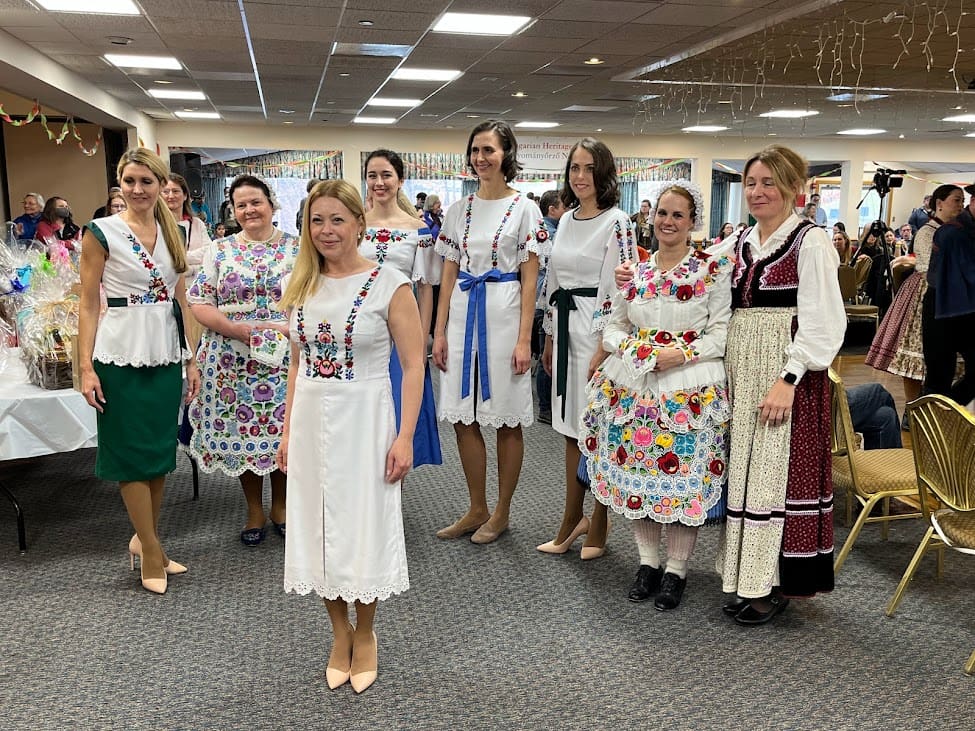
You were also a board member and even vice president of the Hungarian Society of Massachusetts. How did you manage to cooperate with the older generations?
When we moved here, I didn’t know anybody from the older generation, but when they heard about the school, I was invited to the society by Iván Kristóffy, who was their leader for a long time and was involved with the erection of the Boston statue of the 1956 revolution in 1986. We became very good friends; he personally invited me to join the board. I liked the fact that most of the board members were open to involving young people and listened to their new ideas. They invited people of all ages, so we really got a wide range of perspectives on issues and problems, and it worked well. I myself learned a lot from my older board colleagues. I was an active member of the society’s board for more than ten years and was involved in the organization of countless programs and gained a lot of experience. I also started to cooperate with organizations in other states. Friendly relations with our neighbors near and far will bring good results. I believe in helping each other and enjoying each other’s success. Nowadays, the society is the umbrella organization of Boskola, the local scout troop and the Science Club. In the past, the society was responsible for the national holiday celebrations, but we realized that it would be much easier to hold these events at the school. They now organize the harvest festival and the wreathing of the 1956 statue and of the Petőfi plaque on 23 October. The new board is working well together; they are in the learning phase, and if they need us, we are here for them.
Finally, you are a board member of the HAC. How did you get there?
Boskola and the Hungarian Society of Massachusetts both joined the HAC. At the beginning, only the society represented itself at the board meetings, but after a while I also joined to represent Boskola personally. I listened with interest to the reports and was delighted to see the organization’s achievements. They were clearly very happy to have some younger members with new ideas. This was probably the reason for being asked to be a board member. I recently took over organizing the Coalition Coffee House project, an online program launched during Covid, where, for example, the heads of Hungarian libraries in the North American diaspora introduced themselves and presented their locations in short video clips. Last year, I held an online discussion with the Kalocsa Heritage Association’s leader and one dance teacher and screened a short film made previously when they attended our Hungarian Heritage Day. The next theme will probably be 1956, which I am very much interested in and have talked a lot about with older friends witnessing the revolution. The legendary freedom fighter Gergely Pongrácz also lived in Boston for some time, and quite a few 56ers are still alive in this region. We need to sit down and listen to them. It is very important that we preserve as many of their stories as possible.
Read more Diaspora interviews:

